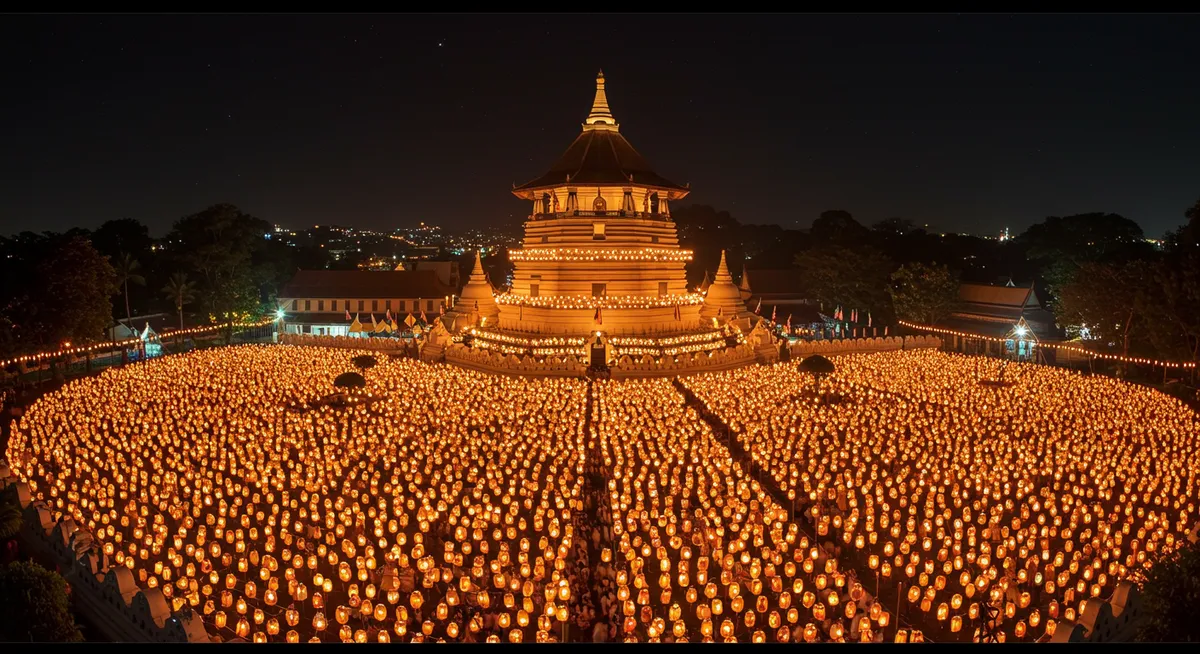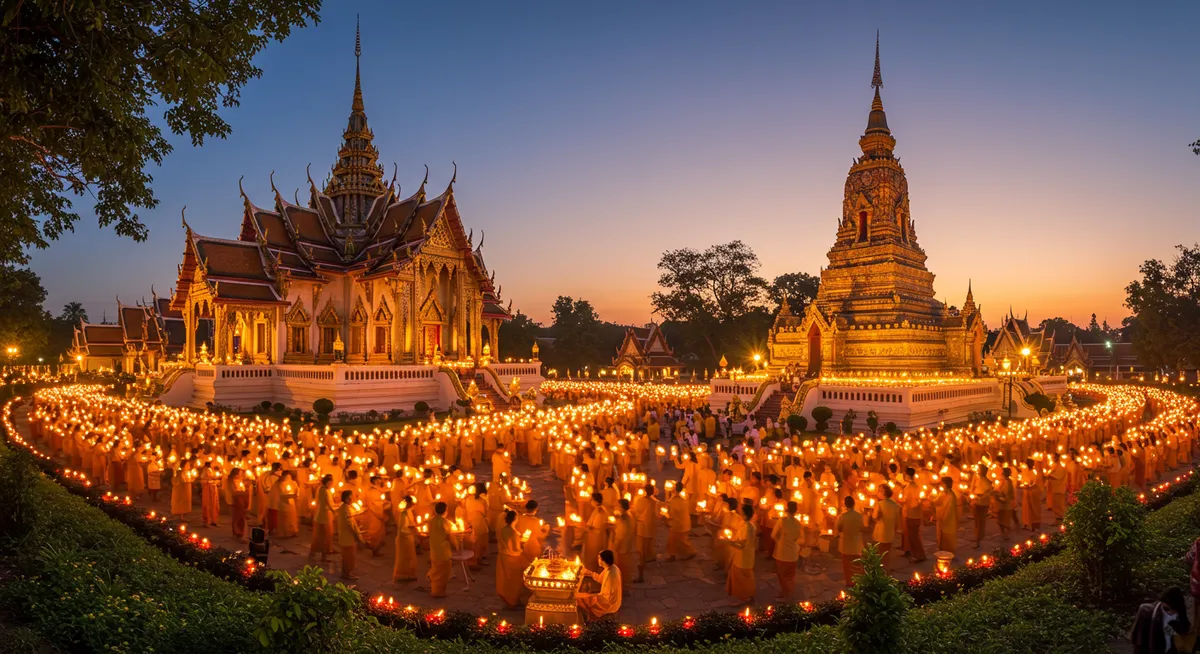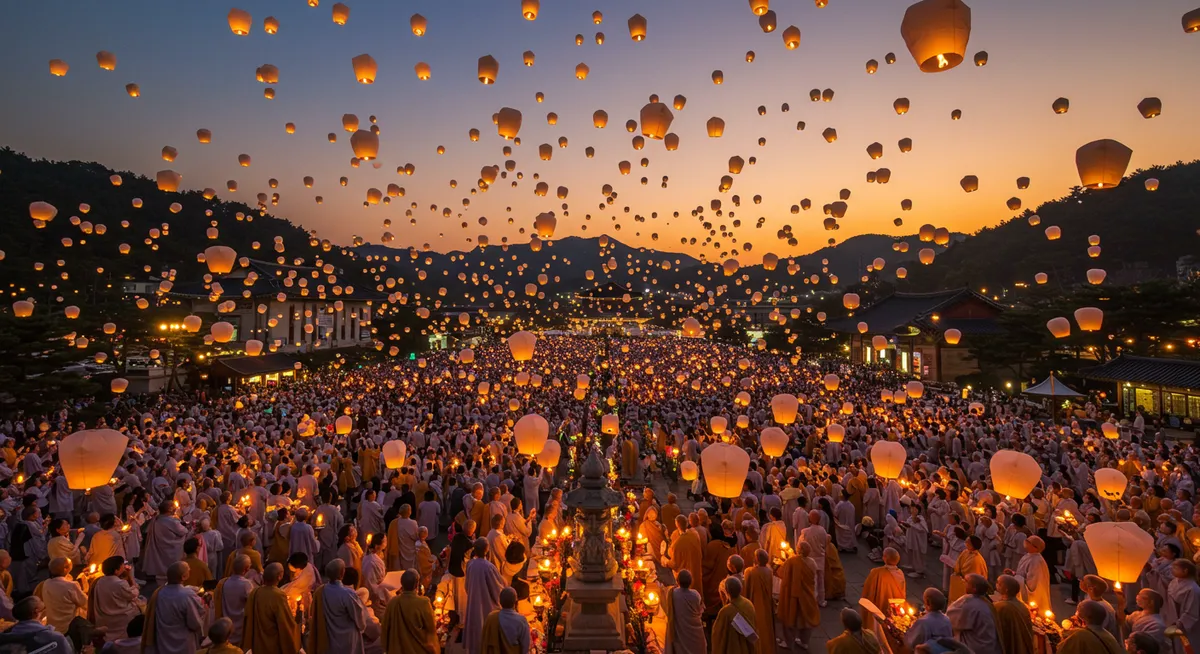Vesak: Buddha Day Celebrations Across Asia | Festival Guide

Vesak: Celebrating Buddha's Life Across Asia's Buddhist Nations
Vesak, also known as Buddha Day, Buddha Purnima, or Wesak, stands as Buddhism's most significant annual celebration, commemorating three pivotal moments in Gautama Buddha's life: his birth, enlightenment, and passing (Parinirvana). This spiritual festival transforms Buddhist communities across Asia with candlelit processions, temple ceremonies, and compassionate acts of charity. For travelers seeking profound cultural immersion, Vesak offers an unparalleled window into living Buddhist traditions that have endured for over two millennia.

The Sacred Significance of Vesak
Vesak celebrates the complete cycle of Siddhartha Gautama's existence as the Buddha, making it uniquely meaningful within the Buddhist calendar:
- Triple Commemoration: Unlike most religious holidays that celebrate a single event, Vesak honors Buddha's birth, enlightenment, and passing into Nirvana
- Full Moon Timing: Traditionally observed on the full moon of the month of Vesakha (usually May, though varies by country and lunar calendar)
- UN Recognition: Internationally recognized as "Buddha Day" by the United Nations in 1999, acknowledging Buddhism's contributions to humanity
- Regional Variations: Different traditions emphasize various aspects of Buddha's life, creating distinct regional ceremonies
How Vesak is Celebrated Across Asia
While united in purpose, Vesak celebrations showcase remarkable regional diversity:
Sri Lanka (Vesak Poya)
Sri Lanka's elaborate Vesak traditions create some of Asia's most visually stunning ceremonies:
- Pandals & Lanterns: Intricate illuminated structures depicting Buddhist stories transform cities and villages
- Thorana: Elaborate temporary gates with countless lights create brilliant displays in public spaces
- Dansal: Free food and drink stalls set up by communities embody Buddha's teachings of generosity
- Devotional Songs: Bhakti Gee performances fill the air with devotional music throughout the night
Thailand (Visakha Bucha)
Thailand blends royal pageantry with profound devotional practices:
- Royal Ceremonies: The monarch leads merit-making ceremonies at major temples, particularly in Bangkok
- Candlelit Processions: Evening wian tian ceremonies involve circumambulating temples three times holding candles, incense, and lotus flowers
- Temple Visits: Devotees participate in tak bat (alms-giving to monks) and listen to special Dhamma talks
- Animal Release: The practice of releasing birds and fish symbolizes compassion for all living beings

Myanmar (Kason)
Myanmar's Vesak focuses particularly on Buddha's birth with distinctive water rituals:
- Bodhi Tree Watering: Devotees ceremonially water sacred Bodhi trees, recalling the tree under which Buddha attained enlightenment
- Pagoda Illuminations: The golden Shwedagon Pagoda and other stupas are specially illuminated
- Alms Processions: Elaborate dana (giving) ceremonies provide offerings to monks
- Flower Offerings: Nyaung leaves and water lily arrangements adorn temple altars
Nepal and India (Buddha Jayanti/Buddha Purnima)
In Buddha's birthplace, celebrations focus on his historical connection to the region:
- Lumbini Pilgrimage: Thousands visit Buddha's birthplace in Nepal's Lumbini gardens
- Bodh Gaya Ceremonies: Special rituals at the site of Buddha's enlightenment in India
- Prayer Flags: Colorful flags printed with mantras are hung throughout Himalayan Buddhist regions
- Butter Lamp Offerings: Thousands of lamps symbolize the light of Buddha's teachings
Indonesia and Malaysia
Southeast Asian nations with significant Buddhist populations observe Vesak with distinctive ceremonies:
- Borobudur Rituals: Indonesia's magnificent ancient Buddhist monument becomes the center of elaborate ceremonies
- Bathing Buddha: Ritual cleansing of Buddha statues with scented water symbolizes purification
- Pradaksina: Circumambulation of sacred sites with prayers and offerings
- Charitable Activities: Community service projects expressing Buddhist values of compassion
East Asia (South Korea, Japan, China)
East Asian nations blend Mahayana traditions with local cultural elements:
- Lotus Lantern Festivals: Korea's spectacular Yeondeunghoe transforms cities with thousands of lanterns
- Temple Food: Special vegetarian meals prepared according to Buddhist precepts
- Flower Offerings: Temples are adorned with lotus flowers symbolizing purity emerging from muddy waters
- Hanamatsuri: Japan's flower festival celebration of Buddha's birth includes pouring sweet tea over Buddha statues
Experiencing Vesak as a Traveler
For travelers, Vesak offers extraordinary opportunities for cultural immersion:
Recommended Vesak Destinations
These locations offer particularly memorable Vesak experiences:
- Colombo, Sri Lanka: For spectacular illuminations, pandals, and community atmosphere
- Borobudur, Indonesia: For ceremonies at one of Buddhism's most magnificent ancient monuments
- Lumbini, Nepal: For pilgrimage to Buddha's birthplace
- Bangkok, Thailand: For royal ceremonies and grand temple observances
- Seoul, South Korea: For the Lotus Lantern Festival's breathtaking displays
Traveler Etiquette for Vesak
Respectful participation enhances both your experience and local appreciation:
- Dress Modestly: Cover shoulders and knees when visiting temples
- Observe Quietly: Keep voices low during religious ceremonies
- Photography Awareness: Ask permission before photographing monks or ceremonies
- Dietary Consideration: Many observant Buddhists eat vegetarian food during Vesak
- Shoe Etiquette: Always remove footwear when entering temple buildings

Vesak Calendar and Planning
Vesak dates vary by country and lunar calendar calculations:
- Thailand, Cambodia, Laos: Full moon of the 6th lunar month (typically May)
- Sri Lanka: Full moon of the month of Vesak (usually May)
- Singapore, Malaysia, Indonesia: Full moon of the 4th lunar month
- Nepal, India: Full moon day of Vaisakha (April-May)
- China, Korea, Japan: 8th day of the 4th lunar month (Buddha's birthday focus)
For travelers planning a Vesak journey, checking the specific dates for your destination country is essential, as they can vary by several weeks between nations.
Vesak's Universal Messages
Beyond the ceremonies, Vesak embodies core Buddhist principles accessible to all visitors:
- Compassion (Karuna): Demonstrated through charitable acts and animal releases
- Mindfulness (Sati): Encouraged through meditation events and temple ceremonies
- Non-violence (Ahimsa): Emphasized through vegetarian meals and peaceful gatherings
- Wisdom (Pañña): Shared through special Dhamma talks and teachings
- Community (Sangha): Celebrated through collective ceremonies and shared meals
Experience Vesak on your Asian journey
Timing your visit to coincide with Vesak offers an unparalleled opportunity to witness Buddhism's living traditions in their most vibrant expression.
Contact local Buddhist temples at your destination for specific ceremony times and visitor guidelines.
Explore More Asian Cultural Festivals
If you're fascinated by Vesak celebrations, discover other extraordinary Asian festivals that showcase the continent's rich cultural heritage:
Songkran Water Festival
Thailand's Buddhist New Year celebration with water purification rituals.
Holi Festival
India's colorful spring celebration of divine love and new beginnings.
Dragon Boat Festivals
Ancient East Asian celebrations with thrilling boat races and rice dumplings.
Cheung Chau Bun Festival
Hong Kong's unique festival featuring a towering bun mountain and Taoist ceremonies.
Hanami
Japan's beloved cherry blossom viewing tradition celebrating spring's ephemeral beauty.
Gion Matsuri
Japan's month-long festival with spectacular float processions and traditional arts.
Return to our Asian Cultural Festivals Guide to discover more extraordinary celebrations across the continent.